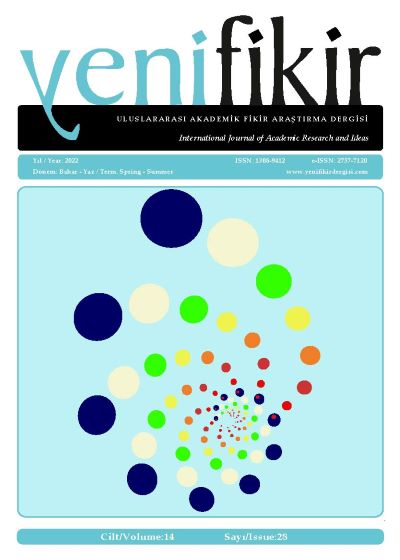Issue 28
Articles
Gulden KARAKUS
The Impact of Women’s Entrepreneurship and Gender Inequality on Human Development
Women’s entrepreneurship plays a crucial role in increasing the effectiveness of leadership, innovation, research and development, and creating job opportunities, competitiveness, productivity, and new industries. The economic contribution generated by women through their entrepreneurship has a critical role in economic growth and sustainability. Gender inequality refers to the situation where women are disadvantaged compared to their male counterparts. Ensuring gender equality is considered one of the key factors in empowering women economically. From these conclusions, this study has been based on the assumption that reducing gender inequality and increasing women's entrepreneurship will affect the human development of societies positively. Therefore, the effects of women's entrepreneurship and gender inequality on human development have been analyzed by using data on women's entrepreneurship, gender inequality, and human development from 76 countries. Study findings have revealed that women's entrepreneurship and gender inequality significantly affect human development. While the effect of women's entrepreneurship on human development is positive, that of gender inequality is negative. It is advisable that countries involve women more in economic and social processes by developing policies to reduce gender inequality, and contribute to human development by supporting women entrepreneurs and encouraging women’s entrepreneurship.
01 - 10
Keywords: Female entrepreneurship, women’s entrepreneurship, gender inequality, human development
Mustafa SOBA; Aliye KARATAS
Evaluation of Postgraduate Theses Written in the Field of Six Sigma Between 2001-2021 in Turkey
Motorola is the first company in the world to implement and use Six Sigma. The purpose of companies is to make a profit. For this reason, Six Sigma, which appeared in the 1980s, has been adopted as a management philosophy. The aim is to reduce the number of errors encountered to zero. As a result of reducing the errors to zero, unnecessary material usage, waste and wastage are reduced, energy and time losses are prevented. Error-free production will enable easy planning of production, sales and human resources. The fact that Six Sigma was mostly preferred by the private sector aroused curiosity about its status in public institutions. Six Sigma aims to increase efficiency, quality and therefore customer satisfaction. Short payback periods and the expectation of high return on investment are also among the goals of Six Sigma. In the past years, there was a misconception that quality cannot be easily measured in the service industry. But it is now understood that there is a recognition that processes in the service industry are suitable for measurement. It is aimed to conduct a qualitative research of the studies conducted in the field of Six Sigma in Turkey. In this context, 206 theses prepared between 2001-2021 were analyzed with various variables such as the type, University, Institute, Department, language of writing, topics and accessibility.
11 - 18
Keywords: Six Sigma, Public Institution, Graduate Thesis
Nazan Ozdemir-Ozturk
Evaluation of Turkish automotive industry by Five Forces Model
In today's technology age, where many innovations can be seen in various fields, the automotive sector is at the forefront of the industries. These experiences do not only affect the automotive industry, but also other suppliers and component providers related to the industry (green vehicles, intelligent transport systems, electromobility, etc.). For this reason, it is very important for the Turkish automotive industry to keep up to date with new trends and legal regulations in order to maintain and improve its position in the global market and adopt a proactive attitude, gain competitive advantage and plan for the future without hesitation close.
The aim of this study is to analyze the competitive structure of the automotive industry in Turkey using Porter's five forces model and to develop a general assessment. As a result of the analysis, it can be stated that the threat from substitute products is low, but the threat from new market entries and competition between existing companies is high. However, the strength of suppliers and buyers was rated as moderate.
19 - 27
Keywords: Automotive industry, Competition analysis, Five Forces Model.
Mustafa BAYHAN; Irfan YACAN; Ayten DEMIREL
A Study on Statistical Quality Control Applications in Manufacturing Processes
Enterprises need to consider certain standards while producing products and services. Ensuring this standard and controlling the conformity of the production to the targeted quality requires using some quality tools and methods. In this context, it is important for enterprises to use control charts and statistical tools and methods introduced by Shewhart since the 1920s in order to control natural and special variations in production processes. This study aims to summarize the literature research on statistical quality control studies conducted with the keywords "statistical quality control" and "statistical process control" in the search engines of DergiPark and TR Index and to examine the studies that are the subject of the research. Within the scope of the study, the distribution of articles by years and journals was examined, and a full list of studies was given. It has been seen that all of the compiled articles are practical solution studies and consist of applications made in manufacturing enterprises.
28 - 35
Keywords: Statistical Quality Control, Statistical Process Control.

